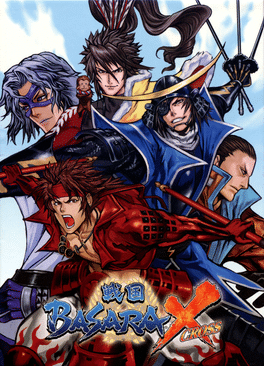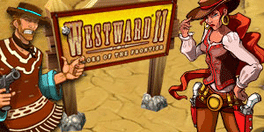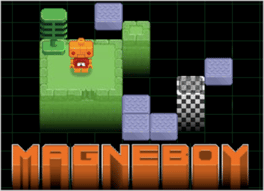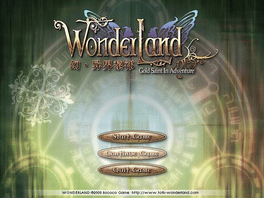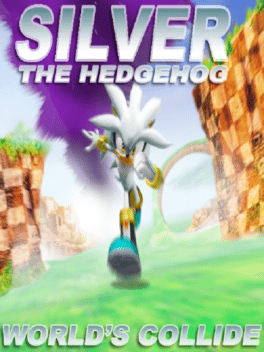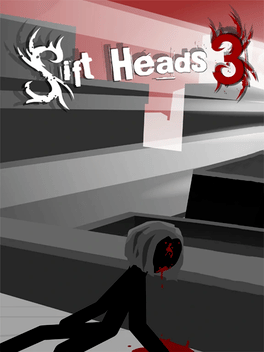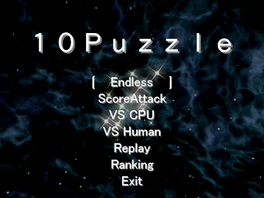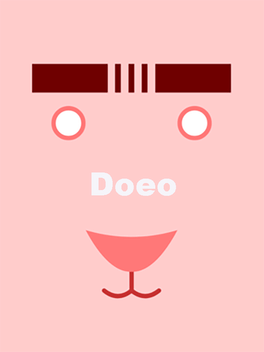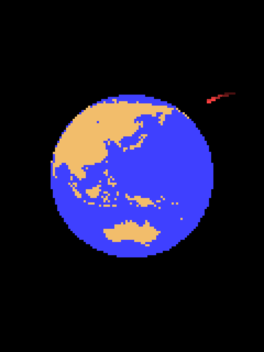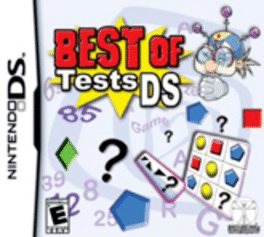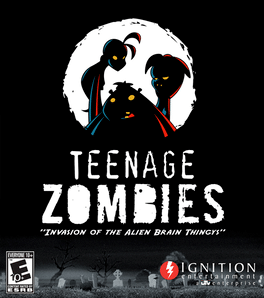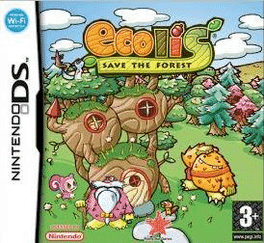New Games - Page 9985
-
Westward 2
2008
Westward 2
2008
Stake your claim today! Fortune is yours for the taking! Steer the fortunes of three adventurous pioneers as they build and defend their ever-growing settlement from dangerous bandits determined to cheat or steal from anyone they cross. -
Sengoku Basara X
2008
Sengoku Basara X
2008
Sengoku BASARA X (pronounced Cross) is a 2D Fighting spinoff developed by Arc System Works and released by Capcom at the arcades on April 2008, featuring 10 playable characters each with their own uniqueness. Later on it was ported to the PlayStation 2, adding extra contents such as 2 more playable characters and a challenge mode. -
Westward II: Heroes of the Frontier
2008
Navigate uncharted territories, build prosperous settlements and bring an elusive gang to justice in this thrilling sequel to the hit adventure. -
Magneboy
2008
-
Wonderland: Gold Saint In Adventure
2008
Garen, who was in the Twin Wombs of the Holy Kingdom, inexplicably arrived at the mysterious place full of magma when he woke up and also wore a retro knight costume. , is the best thing to do in the future. Garen exited the Cave of Flames and heard someone calling his name: it was the Cancer Saint, DeathMask. Deathmask was also transported to this strange world when he woke up from his sleep. It was very likely that all the Golden Saints were involved. The best way to deal with the disease is through a first battle in a different world, Gallon and Dis fought their adventure in the mysterious different world of Fontainebleau. What is the problem? What is the problem? What is the problem? -
Silver the Hedgehog: World's Collide
2008
"Silver The Hedgehog: World's Collide" is a 2D fangame that revolves around the character, Silver the Hedgehog, inspired by the game "Sonic the Hedgehog (2006)". In this game you play as Silver the Hedgehog as you try to stop Eggman Nega from taking over the world by utilizing Silver's psychokinesis which you can control using your mouse or mouse pad. You must use Silver's psychokinetic powers to defeat enemies and move around platforms and other objects that will help you progress through the many different levels of the game. -
Sift Heads 3
2008
Sift Heads 3
2008
Vinnie is out to get some revenge in the third episode of this mafia noire stickman puzzler, the Siftheads series. -
10 Puzzle
2008
-
Assassin's Creed: Director's Cut Edition
2008
star 7.6Assassin's Creed is a non-linear action-adventure video game, during which the player controls a 12th-century Levantine Assassin named Altaïr Ibn-La'Ahad during the Third Crusade, whose life is experienced through the Animus by his 21st century descendant, Desmond Miles. The Director's Cut Edition features four PC-exclusive memories, including the Rooftop Race Challenge, the Archer Stealth Assassination Challenge, Merchant Stand Destruction and Informant Escort Challenge. -
Doeo
2008
Doeo
2008
You’ll need a sharp eye and fast fingers to master Doeo! This online action game gets you grabbing as many Doeos as you can before the clock runs down. Mouse over to catch them as quickly as possible before they disappear. Catch your quota to advance to the next hilarious level. Make it to the sixth and final level to take on the boss. I bet you’ll laugh… at least once! -
Days of Memories
2008
Days of Memories
2008
Days of Memories is a compilation of the first three of SNK Playmore's dating simulation games. -
Mission Runway
2008
Mission Runway
2008
Do you have what it takes to design a fancy frock or a fashion flop? Compete in creative challenges for the once-in-a-lifetime opportunity to show your creations in a major runway event and become the ultimate fashion designer. Will you be asked to stay or leave Mission: Runway? -
Call of Duty 4: Modern Warfare - Variety Map Pack
2008
The Variety Map Pack includes four new multiplayer maps featuring a variety of locations. “Creek,” a wide-open village ravaged by combat where concealment is the difference between life and death; “Broadcast,” fight throughout an enemy communications building with confined corridors and wide-open parking lots; “Chinatown,” a foggy downtown district, lit only by a full moon and the neon glow of the city; and “Killhouse,” featuring a desolate training warehouse filled with a variety of building mock-ups and soft and hard cover points. -
Earth Editor
2008
Earth Editor
2008
A simulation game that creates the Earth using various dots on the field of gravity. -
Magic Pen
2008
Magic Pen
2008
Use the mouse to draw an object. You cannot draw inside other objects. Draw a circle by holding the left mouse button. You can use pins and hinges to link two objects together. -
Ship Simulator 2008: New Horizons
2008
Challenge your friends online with New Horizons. Try your hand at sailing a luxury cruise liner & a classic yacht or feel the impact of the waves as you guide your fishing vessel home through a storm! New Horizons offers new highly realistic environments and adds eight exciting new vessels for your sailing pleasure. Includes 20 all new missions and free roaming multiplayer mode too! The add-on will require the original game to run and will automatically upgrade any version of Ship Simulator 2008 with all previous updates and patches. -
Best of Tests DS
2008
Best of Tests DS
2008
THINK THEREFORE I PLAY! Logic, observation, memory, speed of perception and analysis: these are the qualities that defi ne the famous Intelligence Quotient and the ones that Best of Tests DS will enable you to test, according to renown scientifi c protocols. It will also allow you to improve them! Through the very many tests and using all the functionalities specifi c to the Nintendo DS which are found in the three gaming modes (Training – verbal, numbers and letters, drawings, playing cards, dominos, etc. - Memory and Tests) Best of Tests DS calculates your I.Q. and adapts itself to your level in order to offer you a personalized challenge that is always renewed and updated. All the classic challenges of I.Q. tests on your Nintendo DS. An excellent way to maintain and improve your intelligence, while you are having fun! Several hundred different questions The best way to prepare for professional I.Q. tests! A continually renewed interest thanks to the varied rules and different ways to answers the qu -
Fate of Hellas
2008
-
Teenage Zombies: Invasion of the Alien Brain Thingys!
2008
star 5.7The Earth is under attack by a horde of Alien Brain ... uh ... Thingys! Humans, succumbing to ray-guns, mind-control, and shiny flying saucers, have failed to defend their planet and let it fall easily into the clutches of the Big Brain and his army of Brain Thingys. The only hope left for mankind is three Teenage Zombies that have arisen from a graveyard disturbed in the invasion. The undead trio ignores their normal human victims in favor of the pulsing pink brains they see EVERYWHERE - all the while being lured to the ultimate lunch: THE BIG BRAIN! The Big Brain soon refocuses his efforts and resources to battle the Earth's greatest champions: The Teenage Zombies! Teenage Zombies uses a whimsical style that focuses on, and parodies the Zombie genre, as well as 1950s style Science Fiction. This is presented in a comic book look featuring comic book panels, dialogue boxes and story telling. Gameplay involves side-scrolling adventures opening up to stylus mini-games, double-screen boss battles, and brain busting -
Eco-Creatures: Save the Forest
2008
star 5Deforestation, pollution, global warming and industrialization are just some of the many important themes in Eco Creatures: Save the Forest, a unique real-time strategy game and the only game of its kind that promotes awareness of environmental perils while tasking players with defending the Mana Woods against them. Players use the Touch Screen to control units of woodland creatures—named Ecolis, Ecoby and Ecomon—that will protect the naturally beautiful Mana Woods and recover the polluted land. All creature types have unique skills that must be strategically managed. With proper nurturing, they can evolve to learn new abilities that help a player complete the game’s more than 40 environmental missions. As players grow their woodland army, they must also plant new trees to prevent deforestation and revitalize the woodlands. In addition, Eco Creatures includes a creative Land Make feature that lets players build and play their own maps. This eco-friendly RTS also supports two-player play via Nintendo Wi-Fi Con


